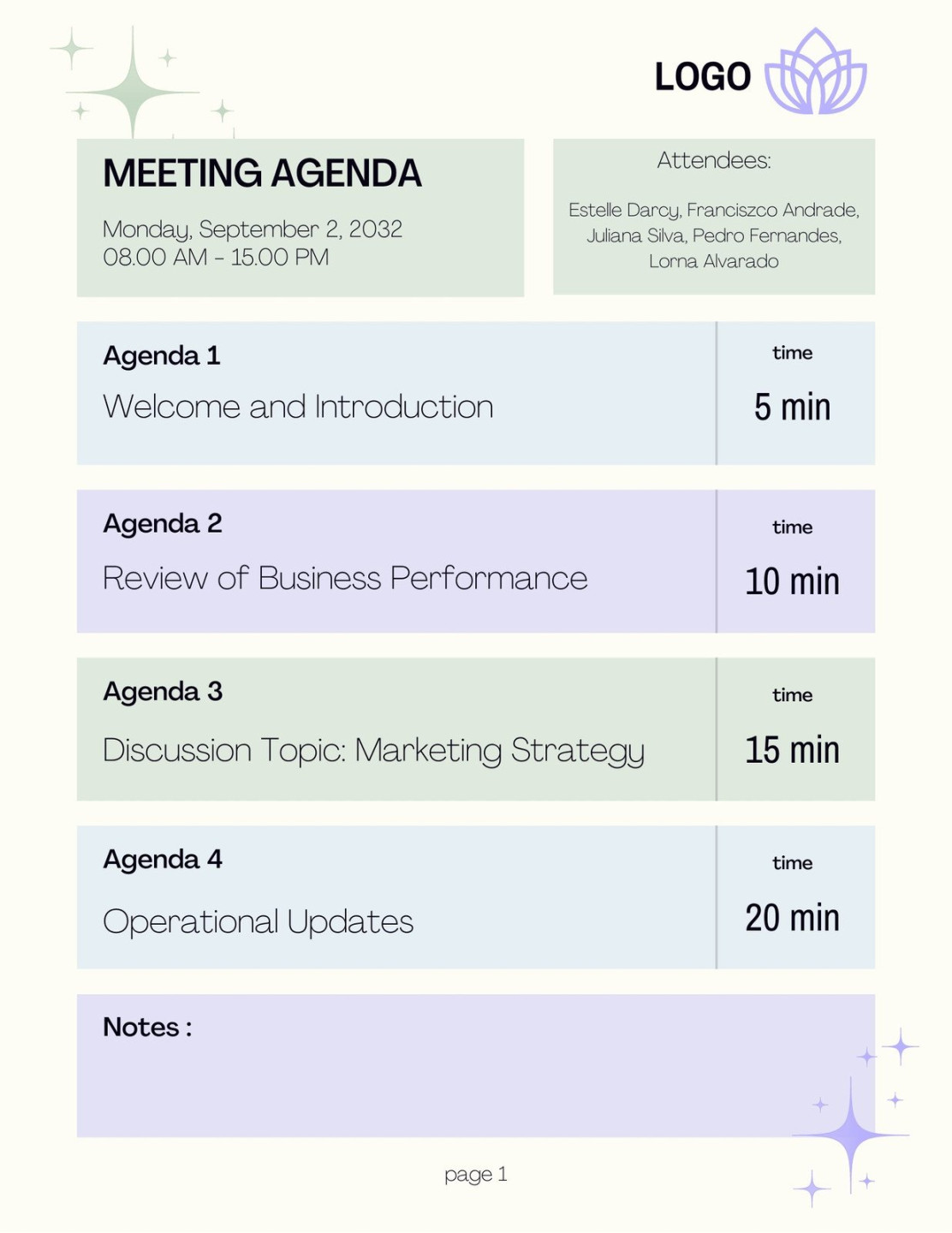An Agenda for a meeting serves as a roadmap, guiding the discussion and ensuring that all pertinent topics are addressed efficiently. A well-crafted agenda can enhance productivity, foster clarity, and leave attendees feeling valued and informed. This guide will delve into the essential elements of a professional agenda template, focusing on design elements that convey professionalism and trust.
Essential Components of an Agenda Template

1. Meeting Title and Date: Clearly state the purpose of the meeting and the specific date it will be held. This information should be prominently displayed at the top of the template.
2. Meeting Time: Indicate the start and end times of the meeting to manage expectations and ensure timely attendance.
3. Location: Specify the physical location or virtual meeting platform where the meeting will take place.
4. Attendees: List the names of individuals who are expected to attend the meeting. This can be done in a table format or a simple list.
5. Meeting Objectives: Clearly articulate the goals or outcomes that the meeting aims to achieve. This will help attendees understand the purpose of the discussion and contribute meaningfully.
6. Agenda Items: Break down the meeting into specific topics or discussion points. Each item should be concise and clearly stated.
7. Time Allotment: Assign a specific amount of time for each agenda item to ensure efficient use of meeting time.
8. Action Items: Designate a responsible party for each action item that arises from the meeting. This will help track progress and ensure accountability.
9. Next Steps: Outline any follow-up actions or decisions that need to be made after the meeting. This will provide clarity and ensure continuity.
Design Considerations for a Professional Agenda Template
1. Layout and Formatting: Choose a clean and uncluttered layout that is easy to read and navigate. Use consistent fonts, font sizes, and spacing throughout the template.
2. Headings and Subheadings: Use clear and concise headings and subheadings to organize the agenda and make it visually appealing.
3. Color Scheme: Select a color scheme that is professional and visually pleasing. Avoid overly bright or distracting colors.
4. White Space: Use white space effectively to create a sense of balance and readability. Avoid overcrowding the template with too much information.
5. Branding Elements: If applicable, incorporate your organization’s branding elements, such as your logo and color scheme, to create a cohesive and professional look.
Example Agenda Template
Meeting Title: Weekly Team Meeting
Date: Friday, October 5, 2024
Time: 10:00 AM – 11:30 AM
Location: Conference Room A
Attendees: John Smith, Jane Doe, Emily Johnson, David Lee
Meeting Objectives:
Review project progress
Agenda Items:
Project updates (30 minutes)
Action Items:
John Smith will follow up on Project A deliverables.
Next Steps:
Plan for the next week’s meeting.
By following these guidelines and incorporating thoughtful design elements, you can create a professional agenda template that effectively guides your meetings and fosters a productive and collaborative environment.